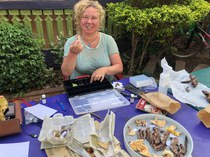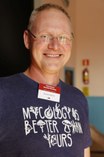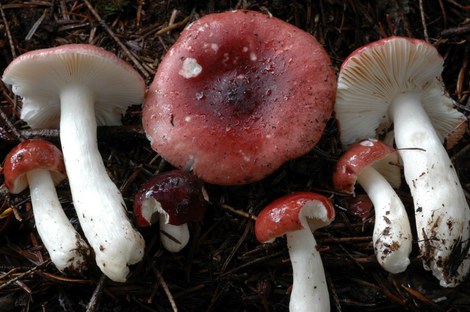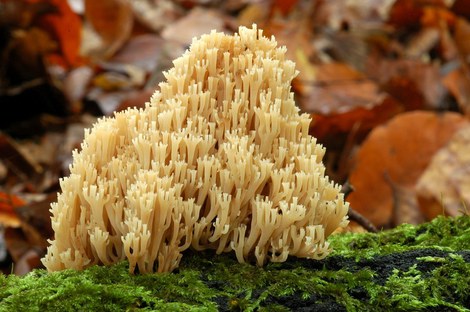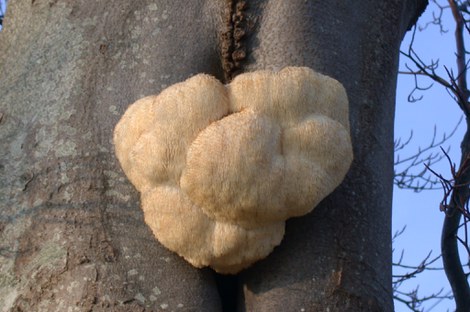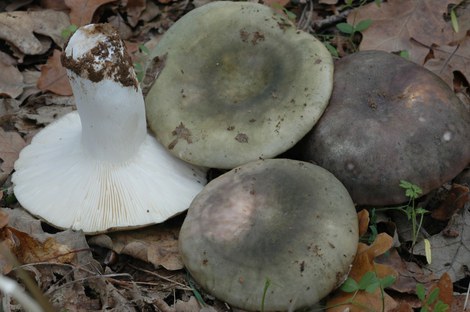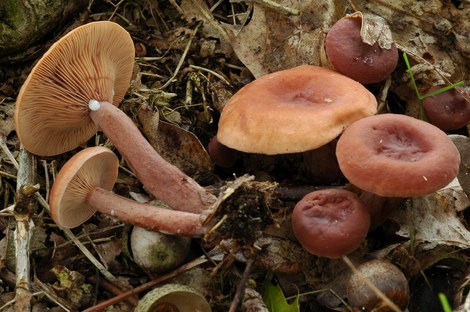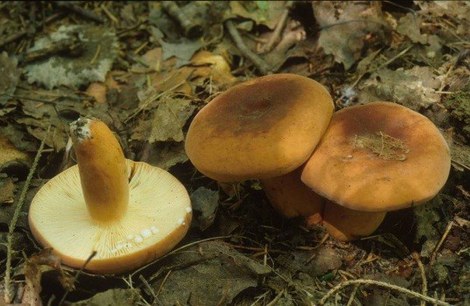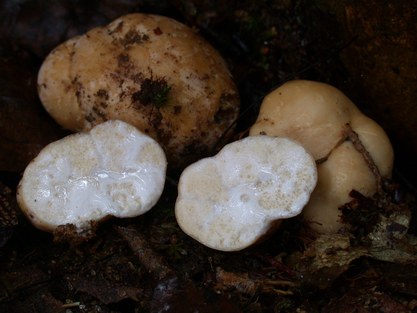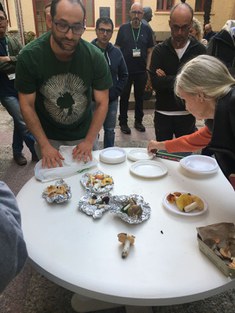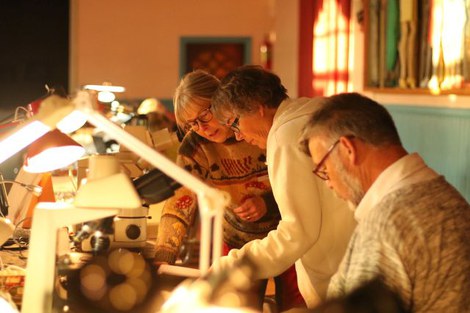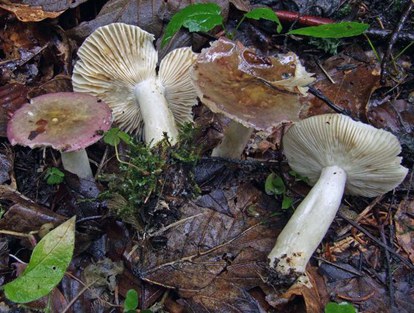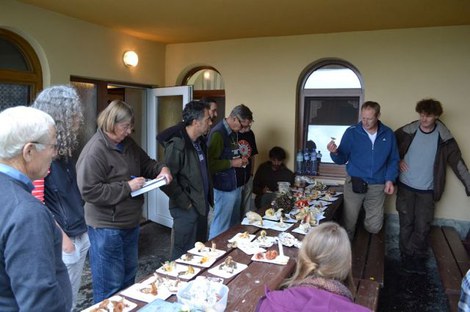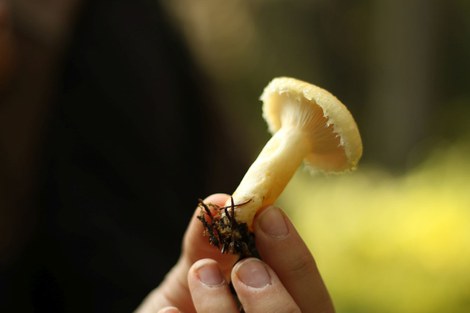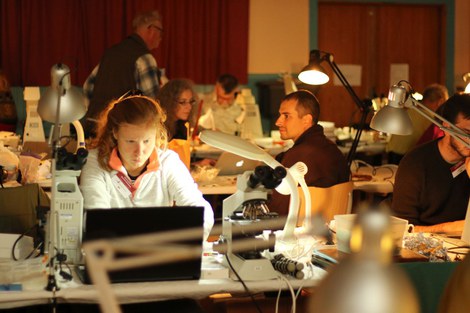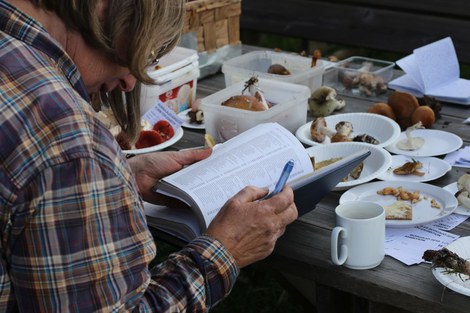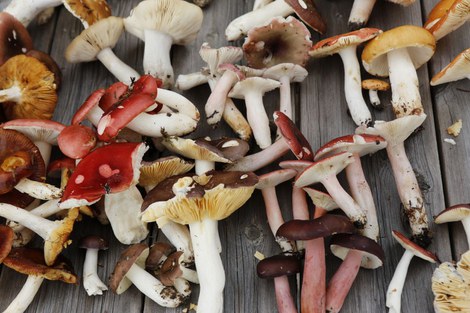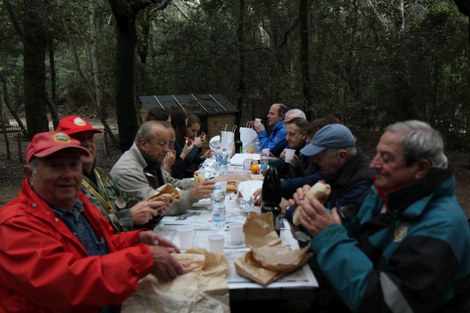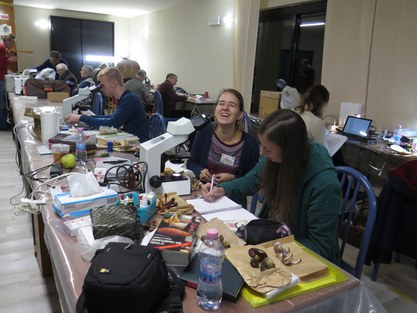International Russulales workshop
Every two years we organize a Russulales workshop in a different country.
Last September we went to Estonia, with this group of researchers:
- (re-)Read the FINAL CIRCULAR for our upcoming meeting in Saaremaa, Estonia (September 8-14, 2024)
- Check the abstracts of the presentations
- More pictures can be found here (collecting photo directory accessible to all participants of the last workshop) or you can admire our selection here
Who are we?
Mieke Verbeken, Research Group Mycology, Ghent University, Ghent, Belgium
and Slavomír Adamčík, Laboratory of Molecular Ecology and Mycology, Plant Science and Biodiversity Centre, Slovak Academy of Sciences, Bratislava, Slovakia,
in close collaboration with experts and organizers in the involved country.
Russulales
With the integration of molecular and ecological data alongside traditional morphological characteristics, scientists now recognize the Russulales as an order displaying remarkable diversity in morphology. This order consists of nine families, with about 4500 known species in total (and this number keeps increasing!), making it one of the largest orders in Basidiomycota. Beyond the classic agaricoid and gasteroid fruiting bodies, this group exhibits a spectrum of forms including resupinate, clavarioid, refused-reflex, pileate, and discoid structures. A defining feature of this clade is the presence of amyloid spores and the occurrence of gloeocystidia or a gloeoplerous hyphal system.
Russulales are fungi of different forms, here are classified hydnoid Auriscalpium vulgare and Hericium spp. with spiny hymenophores, clavaroid Artomyces pyxidatus, polypore Bondarzewia mesenterica and resupinate Boidinia furfuracea.
The core of the order is the Russulaceae family with the bulk of the representatives belonging to four agaricoid genera. The largest genus is Russula (brittlegils, without milk) with an estimated 3000 species. The milk cap genera are Lactifluus (a bot more than 200 species accepted, 530 species estimated) and Lactarius (c. 450 species accepted, c. 1000 species estimated). The smallest genus Multifurca only contains about 10 known species and has a limited distribution. But Russula, Lactarius and Lactifluus occur world-wide, from arctic to tropical areas and are key-players in almost all ecosystems because of the ectomycorrhizal associations they form. Above ground as well as below ground analyses reveal them to be one of the most important ECM groups, among dominant soil fungi in several ecosystems, especially in boreal, temperate and subtropical forests. Their typical plant partners are Betulaceae (birch, alder, poplar, hornbeam), Fagaceae (beech, oak, chestnut), conifers (spruce, pine, fir), but there is a wide variety of symbiotic trees and other plants, including some herbaceous plants. Some species are very host-specific, others have a broader host range.
In addition to hyphae, round cells are also found in the trama; they are referred to as sphaerocytes. It is because of these sphaerocytes that Russula‘s and milk caps are characterized by the easily (like chalk) crumbling, brittle flesh. Another special structure in the trama are the milk vessels or lactifers, which still effectively secrete milk in Lactarius, Lactifluus and some Multifurca species, but no longer in Russula. Microscopically, these representatives are also characterized by spores that have an amyloid decoration and by cystidia and hyphae with an oily content, called the gloeoplere hyphae and gloeocystidia.
In some representatives of Lactarius and Russula we see the transition from gymnocarpy and epigean mode of life to angiocarpy and hypogean way of life, resulting in many truffle-like representatives from this group, such as e.g. Lactarius stephensii (formerly Zelleromyces stephensii), a truffle that forms milky juice!
Our mission:
- Bringing experts and people passionate by Russulales together to explore the Russulales world and to improve the science. Every two years, professional researchers and citizen scientists meet to communicate the current knowledge and novelties and to do fieldwork together. The Russulales workshop is the event where all Russulales enthusiasts meet to discuss and learn about diversity, biogeography, ecology, phylogeny, conservation and etnomycology.
- Boost diversity studies in un(der)explored areas: as in all fungi, a large part of the diversity in Russulales is still undiscovered and unknown. This hidden part can be revealed by exploring new niches and habitats, but also by using new technologies to reveal hidden diversity behind species or species complexes. We do not only want to assess the diversity but also seek to unravel the ecological roles and biogeographic patterns of Russulales, contributing to our broader understanding of ecosystem dynamics and global biodiversity.
- Encourage adoption of general and global Russulales description standards: We advocate for the use of standardized protocols and methodologies in Russulales taxonomy and description, promoting consistency and comparability across studies.
- Sharing material and field experience: We encourage the sharing of specimens, data, and resources, facilitating access to materials essential for research and education. We provide opportunities for hands-on fieldwork and exploration, allowing researchers and enthusiasts to immerse themselves in the natural habitats of Russulales. We value firsthand experiences and expertise, recognizing the importance of both learning from others and sharing our own knowledge and insights.
- Make the research better: Ultimately, our goal is to advance the field of Russulales research, pushing the boundaries of knowledge and understanding to enrich scientific discourse and benefit society as a whole.
Who can participate
The Russulales workshop is for everybody all over the world who has an interest in this particular group of fungi, we welcome senior scientists, as well as early career researchers, amateur mycologists, citizen scientists and students.
Previous Meetings
- 7th International Russulales workshop 2024, Saaremaa, Estonia
- 6th International Russulales workshop 2022, Jaca, Spain
- 5th International Russulales workshop 2018, Borgsjö, Sweden
- 4th International Russulales workshop 2016, Piombiono, Italy
- 3rd International Russulales workshop 2014, Areal Zdravia, Jedlove Kostolany, Slovakia
- 2nd International Russulales workshop 2012, Nordhausen, Germany
- 1st International Russulales workshop 2010, Massembre, Belgium
Recommended Russulales publications
- Russula subgenus Compactae in Europe
- UNITE species hypothesis testing in the Russula albonigra species complex
- Russula standards
- Russula incrustations in sulfovanillin
- New phylogeny of Russula subsect. Xerampelinae
- Russula subsect. Roseinae evolutionary patterns
- Russula subsect. Roseinae in USA
- Russula subsect. Roseinae in Panama
- Russulaceae state of art
- Russulaceae global morphology
- Russulaceae biogeography
- Russulaceae of the Pakaraima Mountains of Guyana : IV. New species forming a distinct lineage of Lactarius subg. Plinthogalus
- Biogeographic history of a large clade of ectomycorrhizal fungi, the Russulaceae, in the Neotropics and adjacent regions
- A short story of nearly everything in Lactifluus (Russulaceae)
- Lactifluus (Russulaceae) diversity in Central America and the Caribbean: melting pot between realms
News
- Invitation to Estonia
- Bring your own Russula project
- In field next generation sequencing planned in Estonia: information will follow
- (other) Russulales news

